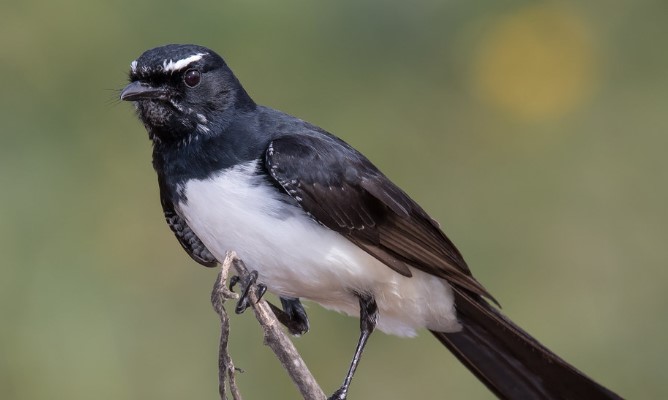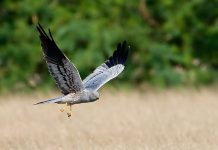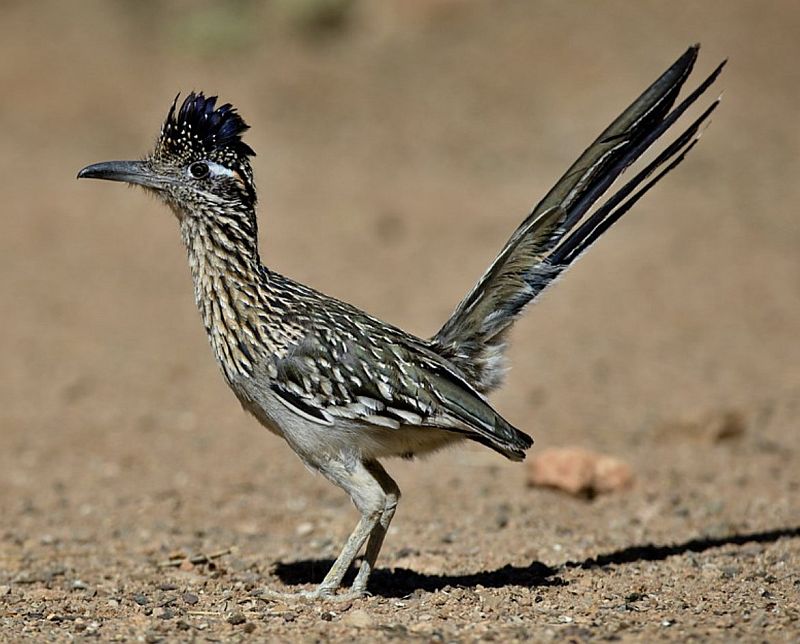Willie Wagtail is a passerine bird native to Australia, New Guinea, the Solomon Islands, the Bismarck Archipelago, and Eastern Indonesia. Foraging conspicuously in open places, Willie Wagtails are the only fantails that feed constantly from the ground, exploiting clearings in urban areas.
This ability has allowed them to spread throughout Australia, avoiding only dense forests and treeless plains. For the best habitat, there should be several exposed stumps, posts, or low trees with vantage points for perching. It appears frequently in Aboriginal folklore around Australia and New Guinea in various roles, from liar and secret-stealer to good omen for crops.
The birds there are sedentary. Hunting wagtails hop and fly in low zigzag patterns over the ground in groups of one or two. Aside from pecking at insects on the ground, they fly directly to hawks before returning to their perches. After landing and before takeoff, wings are flashed, and tails are fanned. Its characteristic manner of swaying its body and waging its tail from side to side is evident at rest as well.

Like the Grey Fantail, it hawks for insects over creeks, launching into steep flight from a boulder. As livestock grazes on cleared fields, birds sally out to catch insects flushed by the animals as they perch on their backs. The Willie Wagtail feeds less frequently than other fantails but takes larger prey.
When breeding, Willie Wagtails are aggressive. Their white brows play a crucial role here. The eyebrows of rivals are exposed and expanded during territorial disputes. When the brows are withdrawn completely, it signals submissive or subordinate behavior, which often ends disputes before any physical contact is made. Sometimes on the same tree as other species, both males and females build nests and feed the young.
The nest is often reused, disassembled, and reconstructed elsewhere if several broods are raised in a season. The eggs are laid every 24 hours, usually before 9 a.m., and both sexes incubate, singing from the nest on calm nights. Natural predators and feral cats reduce nestling production in cooler areas, so nests are larger in cooler areas.
The success rate of later clutches is higher than that of earlier clutches. White eyebrows flutter and become more prominent when a bird displays aggressive behavior, while they settle and become more hidden when a bird displays submissive behavior. It is also known as Shepherd’s Companion, Black and White Fantail, and Australian Nightingale.

Approximately 90–210 mm is the length of the Willie Wagtail. There are similarities between the sexes. There is black on the upper part of the body and on the throat. The eyebrows are conspicuously white, and the sides of the mouth have faint white flecks. The rest of the underparts are white, and the thighs are black. The eyes, the bill, and the feet are black. An immature bird has buff tipping on its back and wings as an adult bird. Grey upper parts with buff tips on juveniles
Several distinct vocalizations distinguish the wagtail from other birds. There are two-syllable rattles in Willie Wagtail’s call. The sound is hissing, metallic, and short. The song consists of a series of musical chatter of quick notes alluding to a sweet, pretty little creature or a sweet, pretty creature. This is given in all seasons and is often heard at night. Although it has more melodious sounds in its repertoire, its alarm call is most recognized as a rapid chit-chit-chit-chit. During times of potential threat, the alarm call appears to serve as a signal to its mate to warn them off.
During the months of August and January, birds nest and breed. The nest is a neat, untailed cup about 70mm across and 40mm deep. Fine grasses are woven into the nest, which is tightly bound with cobwebs and lined with fine fiber. Nests are usually built on sheltered horizontal branches 1–20 meters above the ground.
The bird lays 2 to 4 eggs, usually three. At the larger end of the eggs, there are brown-grey and grey-black spots, sometimes forming a zone. The eggs are cream-brown to sandy. They are approximately 20 x 15 mm long and have an oval shape. Incubation lasts between 14 and 15 days for both sexes. Approximately four days after hatching, a young fledge
The willie wagtail can be found in a wide variety of habitats but avoids densely forested areas such as rainforests. Often near wetlands or bodies of water, it prefers semi-open woodlands or grasslands with scattered trees. Throughout Australia, the Willie Wagtail can be found in a lightly timbered country. It accidentally arrived in Tasmania. The range extends to New Guinea, the Moluccas, and the Solomon Islands. Nomadic or sedentary. There are two races, one of which is endemic to Australia.
Read more: Citrine Wagtail Identification and Call







